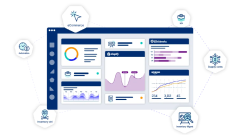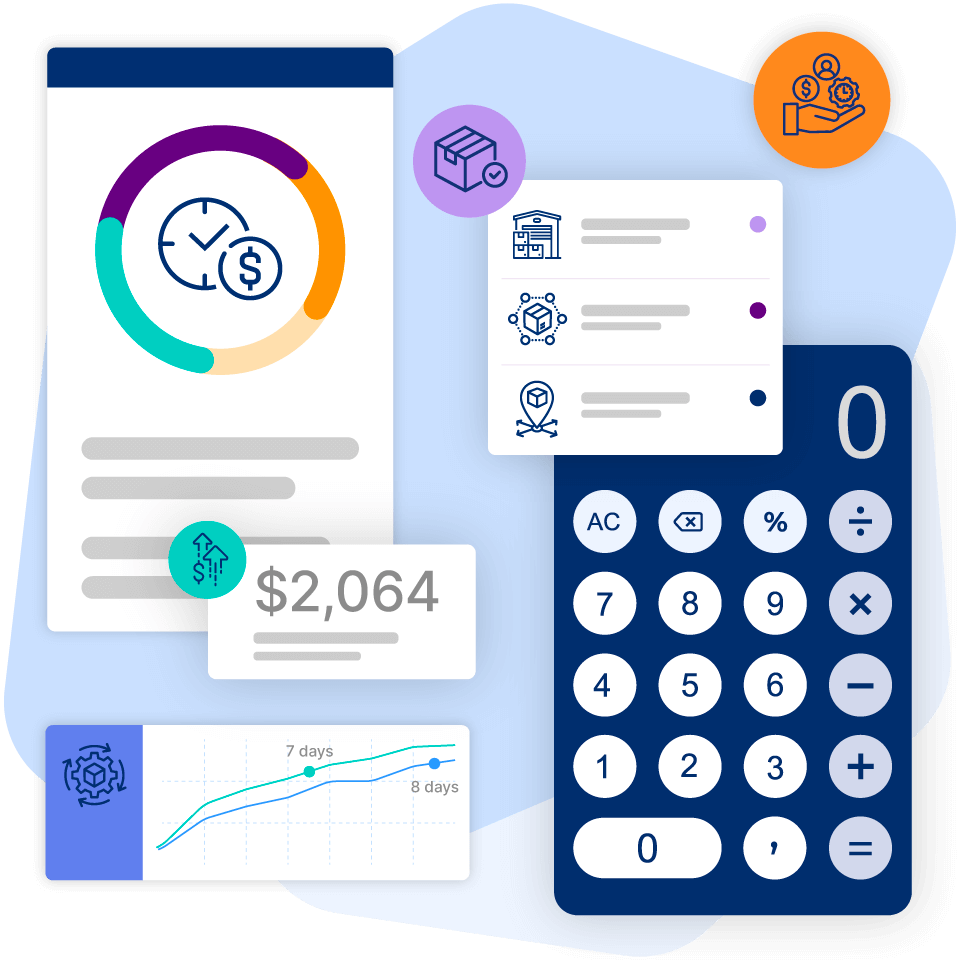
So many sales channels to choose from, so little time. Well, there’s time, but as a product business in today’s uber competitive marketplace, you shouldn’t waste it. Right now, your perfect customer is looking to buy your products, but if you’re not selling where they’re looking, their dollars will be lining your competitors’ pockets.
To get your products flying off the shelf, you need to know what sales channels are out there, and which one is a good fit for your business. Sounds easy, right? Only if you know where to start, which is where we come in!
Today, we’ll go through three steps you can take to determine which sales channel will be your best bet, and by the time you’re done reading, we bet you’ll be successfully reeling in customers through the sales platform that’s a perfect match.
1. Identify Your Base
The first step to sales channel selection success is to understand your customer base. To show how this works, we need you to think like a fisherman.
Any good fisherman knows that you do your research before going fishing. You ask yourself, what kind of fish do I want to catch? What kind of bait should I be using to lure the fish? Where do these fish congregate? Now, insert customers for fish (recognizing, of course, that customers are not fish, and that fishing for customers is not a sport but a critical component to your success) and answer the questions.
The customers you want are those who want and/or need your product. As to who those customers are depends on the type of product you sell. Are you selling a premium product or is it price driven? Is your product for niche buyers or a mass market item? The answers to these questions will provide insights into the type of people you’re looking to entice and who are looking to be enticed.
From here, you need to consider how to lure these customers, which requires digging into your customers’ buying behavior. Buying behaviors include impulse (buying based on feelings), research (buying based on facts), and replenishable (buying based on continuous need). Figuring out your customers’ buying behaviors will help direct your marketing efforts.
Finally, after getting to know who your customers are and learning your buyers’ behaviors, there’s still one more vital piece of data you need before you can move forward: Where do your customers congregate, or in this case, shop?
2. Understand Your Sales Channel Options (and Choose the Right One for You)
Assuming that your customers shop the same way or in the same places just because they like the same product would be a mistake.
Some buyers prefer the hassle-free buying experience that comes with buying items online and having them delivered straight to their door. Others insist on having eyes (and hands) on a product before they make the decision to purchase. And still others appreciate researching online before shopping in a brick-and-mortar store.
Knowing how your target customers prefer to shop will help you determine which sales channel or channels will work best for you. Here’s a breakdown of your sales channel options and a brief look at how each one may—or may not—benefit your business.
- Business website/Online store: Selling your product online via an e-commerce platform, such as Shopify and WooCommerce (platforms that help you create your own online store vs. Amazon, an e-commerce marketplace where you can list and sell your products), puts you in complete control of your business. It also offers:
- Low operating costs
- Automated workflows
- Direct access to customer data
- Opportunities to reach customers around the world
E-commerce is also a lot of work if you don’t have the right technology, like inventory management software (IMS), to help you manage your complex inventory, shipping, and customer logistics (e.g., questions, requests, returns, etc.).
- Retail shop: An in-person store along with pop-ups and events all deliver a tactile experience for shoppers who like to see, touch, and sample an item before they buy it. This sales channel is a great way to build strong community ties and make face-to-face connections that secure customer loyalty, which ultimately helps encourage business growth. However, keep in mind that if you don’t have an e-commerce presence in conjunction with your retail space, then the number of customers you can reach is limited.
- Online Marketplaces: Amazon, Etsy, and Walmart are a few examples of marketplaces where you can showcase your products. These online marketplaces bypass geographical boundaries and open the door to a larger presence, but unlike hosting your own e-commerce site which produces high margins, marketplace platforms charge fees that take a bite out of your profitability.
- Social commerce: Selling products through social media platforms, such as Facebook Marketplace, TikTok Shop, and Instagram Shopping, means you can sell directly to buyers—buyers who give a thumbs up to not having to navigate to an external website when they find a trending product they want. And it’s a sales channel that is becoming very popular. According to Statista, social commerce is forecast to surpass one trillion U.S. dollars by 2028.
- Wholesale platforms: Up to this point, we’ve been examining direct-to-consumer (DTC) sales channels, but selling business-to-business (B2B) via wholesale platforms can be a winning strategy. If your product can be sold in large quantities to other businesses (and you can still make a profit after selling your product at a lower price than retail), then working with wholesale platforms, like Faire and Abound, is a smart choice. Keep in mind that B2B sellers deal with longer sales cycles (boo!) due to larger purchases (yay!) as well as more decision makers that can slow down the process.
Know if It’s Time to Expand
After reviewing the advantages and disadvantages of each sales channel through the lens of who your customers are and what their buying behaviors say about them, you’ll be able to decide which sales channel will make the most sense for your business model, product type, and growth goals.
Now, let’s say you selected a sales channel, and it (unsurprisingly because you did your homework) was the right one. Your business is booming, and you couldn’t be happier. Even so, you’re not content to rest on your laurels. You’re ready to expand into another sales channel so that you can reach the next level.
There are, however, a few things to consider before making the jump to another sales channel.
Inventory and Fulfillment Readiness
Tapping into another sales channel can significantly increase your inventory and fulfillment requirements. This means you must be able to meet and exceed these requirements with reliable inventory management software along with trained staff, seamless workflows, and a reliable supply chain.
Marketing Bandwidth
Moving from one sales channel into two or more sales channels adds marketing pressure. This means you must have a strong, equitable marketing strategy (that includes aligning branding and messaging across platforms) so that your customers and potential customers know who you are, where they can buy your products, and why they should choose you over your competitors.
Channel Cannibalization Risks
Before introducing a new sales channel, you must consider whether the new channel will cause conflict with the original channel. This means you need to decide if the risk of having the channels compete (possibly reducing sales for one or the other) is worth adding it in the first place.
Financial Margin Flexibility
Changing conditions, like adding another sales channel, can positively or negatively impact your business’s financial margins. This means you need to know beforehand if you’re able to survive any short-term financial challenges to secure long-term success.
Discover How Cin7 Can Help
Selecting the right sales channel for your business and expanding into other sales channels (should all the signs point to “yes”) will lead to happy customers and a happy bottom line. However, you can’t do it alone—especially as a business operating in a digital marketplace.
You need a comprehensive, connected IMS that supplies the inventory, order, and forecasting tools you need to quickly and efficiently get products to your customers using the sales channels that work for you.
With Cin7, you have all this and more.
Cin7 offers native integrations with the e-commerce platforms, marketplace channels, and a B2B portal you need while synchronizing and delivering real-time inventory and order data across every channel. Plus, it has the forecasting and analytics capabilities that will help you test new channels with confidence.
For customer Annabelle Earps, Digital PR Manager at Workplace Depot, implementing Cin7 made identifying the company’s customer base and discovering the right sales and marketing channels a cinch. “We’ve been able to build audience segments because of Cin7, which has helped us grow through channels like PPC, Amazon, and email marketing.”
Let Cin7 help you easily manage your sales channels, grow your customer base, and secure your success. Request a free demo today.
More from the blog
View All Posts
Choosing the Right E-commerce Integration: Key Factors for Business Success
Read More
Scaling Up: Challenges and priorities of the 3rd business growth stage
Read More




